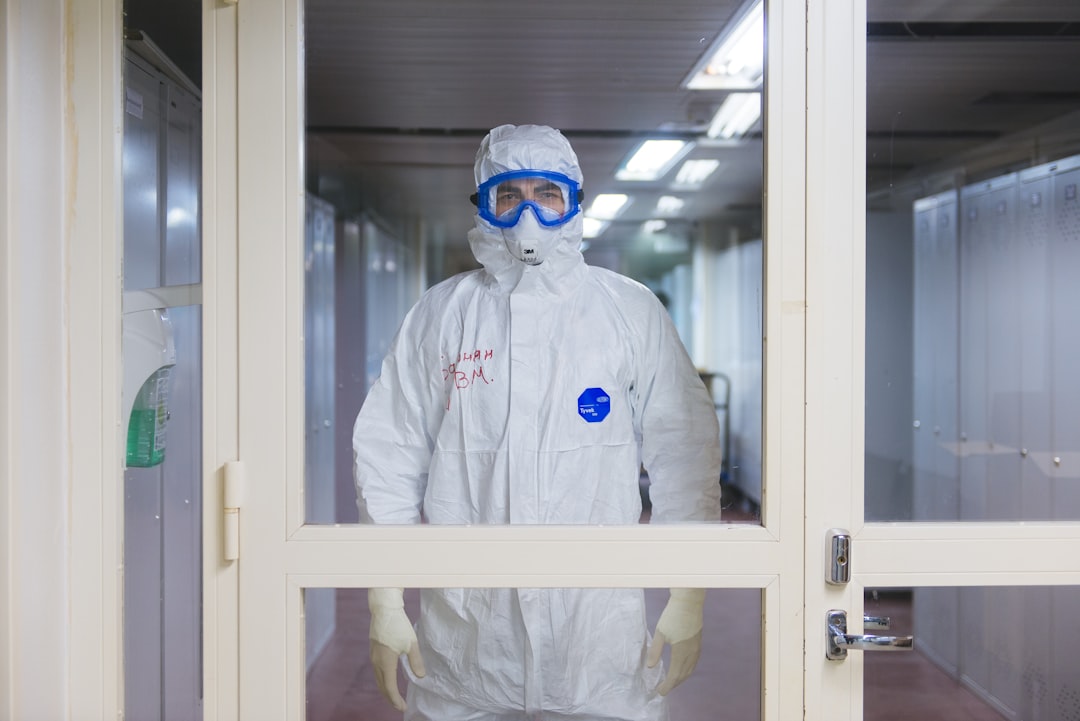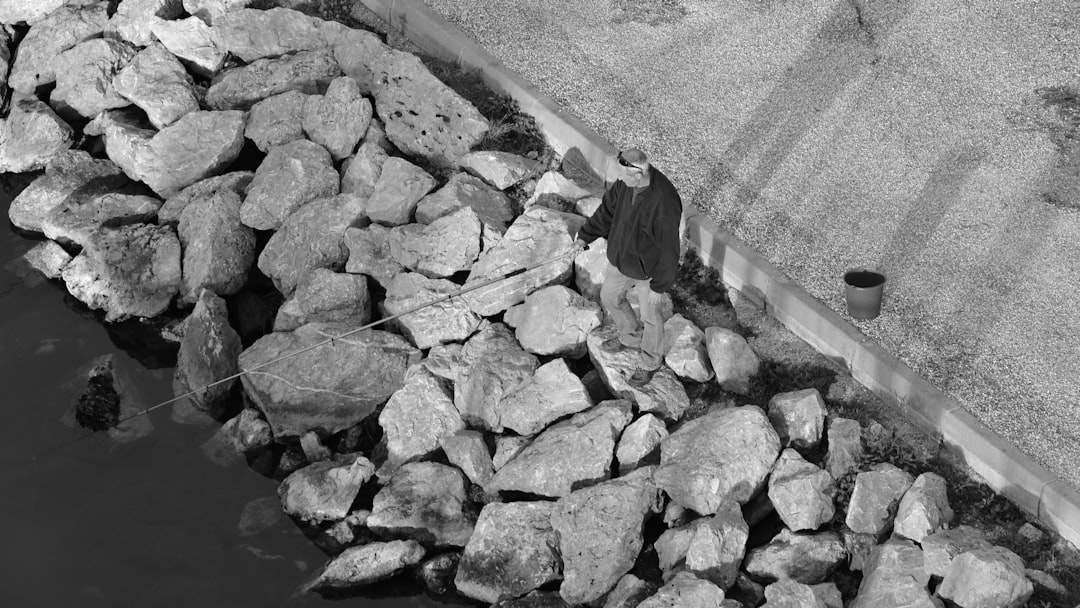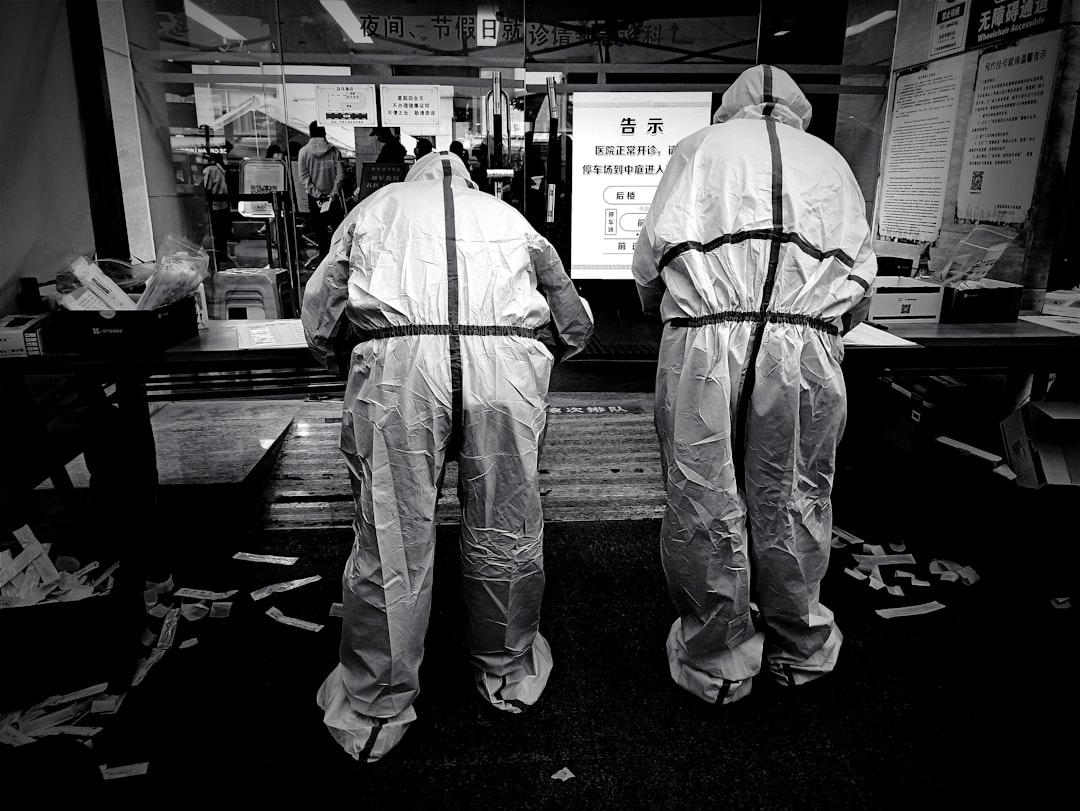

Engage prospects with a scan and streamline customer engagement with FREE QR code marketing tools by Sona – no strings attached!
Create a Free QR CodeFree consultation

No commitment

Engage prospects with a scan and streamline customer engagement with FREE QR code marketing tools by Sona – no strings attached!
Create a Free QR CodeFree consultation

No commitment
Asbestos testing services face mounting pressure from clients, building managers, and regulatory agencies to deliver not only safe, compliant testing but also seamless, transparent communication at every step. Relying on static paper records or hard-to-track email updates often leads to slow turnaround times, unclear next steps for property owners, and a disconnect in documenting hazardous materials. These gaps become even more critical during asbestos management or removal processes, where timely access to reports, test results, and safety instructions is essential; too often, valuable information never reaches the right decision-makers, resulting in missed opportunities for timely action or compliance.
In today’s digitally driven world, QR codes have evolved from a novelty to a strategic powerhouse in bridging offline engagement with online action. For asbestos testing services, QR codes in marketing represent a fast, convenient, and surprisingly effective way to boost compliance, streamline documentation, and improve service transparency, all without requiring complex app installations or technical hurdles for clients or field technicians. This matters when so many stakeholders remain anonymous throughout the traditional workflow, accessing your materials but never flagged in your CRM, ultimately causing high-value prospects or potential upsell opportunities to go untraced.
By strategically deploying QR codes on sampling containers, property reports, signage, and safety certifications, asbestos testing services can empower clients with on-demand access to critical data, quick rebooking, and direct communication. This approach replaces cumbersome analog paperwork and patchy documentation handoffs, delivers a more professional client experience, and unlocks real-world visibility into who engages with compliance materials or test results in real time. As a result, teams are better positioned to follow up when clients or prospects show intent, close compliance gaps, and proactively capture feedback or recurring business.

QR codes bridge the gap between physical assets and digital resources, making it easier for asbestos testing services to deliver safety reports, procedural updates, and regulatory documentation directly to stakeholders’ smartphones. With a single scan, property managers can view site-specific asbestos registers, technicians can log chain-of-custody data and hazardous inventory, and clients can book follow-up sampling or remediation. This immediate access reduces friction and confusion, which is often where compliance breaks down and trust is lost.
Persistent challenges like missed reporting windows, mislaid documents, or clients abandoning follow-up forms can jeopardize compliance and slow growth. Modern digital approaches now allow teams to capture every engagement, turn previously anonymous site visitors into known entities, and ensure that documentation reaches the right audience. By designing QR deployments around the exact moments where your audience needs information, you can shorten cycle times, decrease handling errors, and create a fully traceable audit trail. Explore practical examples in Sona QR’s use case library.
Here’s how to drive better business outcomes:
With robust digital platforms for hazardous materials testing, asbestos services can automate scan tracking, update linked content as regulations change, and document every access event, which reduces the risk of churn, missed regulatory updates, or upsell opportunities slipping through the cracks. Platforms like Sona QR centralize code creation, analytics, and CRM integrations, so teams can act on scan intent in real time and improve outcomes with each iteration.
Longstanding workflows like sending results via postal mail, maintaining paper asbestos registers, or relying on static signage are slow and error-prone. They often leave property owners and contractors frustrated by a lack of visibility, and they expose organizations to compliance risk when documents are lost or outdated. QR codes streamline these tasks by providing a live gateway to digital files and processes that you can update at any time.
In practice, this means you can instantly update asbestos management plans via digital tagging, push the latest test findings to all relevant stakeholders, provide real-time site instructions, and verify removal completion with documented traceability. Every scan can be logged, time stamped, and attributed to a location or campaign. This preserves a secure digital audit trail that analog processes cannot match, while giving clients a user experience that feels modern and reliable.

In asbestos testing services, the challenges of compliance tracking, fast information flow, and proper hazard communication are ever present. Key pain points often arise because high-value stakeholders browse reports or interact onsite, yet that interest remains invisible, resulting in missed follow-ups, unclear responsibilities, or lost repeat business. Improving transparency without adding extra burden to field teams is essential.
QR codes address these gaps with a simple, scalable mechanism that meets users where they are: on printed reports, sampling kits, tenant notices, and site signage. Because scanners do not need to download an app, engagement happens fast and with minimal friction. This allows your service to convert offline interactions into measurable digital actions, which drives both compliance and growth. For safer, clearer labeling in the field, see asbestos QR labeling.
QR codes solve these by:
Common examples include QR code asbestos labeling on sample containers for chain-of-custody and results access, appointment cards that link to booking forms, informational flyers for building occupants that connect to site-specific safety pages, or QR codes on test result printouts that point to the full register and remediation plan. See an industry rollout in the Anglian Anglian rollout. Each example reduces missed opportunities, prompts timely action, and ensures a follow-up path when engagement signals are present but not yet converted.

QR codes in asbestos testing services come in several formats, each solving a unique operational or client communication need. Choosing the right format can improve the usefulness of every scan, while making your metrics more actionable.
For this vertical, the most practical formats are:
Dynamic QR codes are particularly valuable in asbestos testing. They allow you to update the destination as regulations shift, reports are revised, or content is localized for a specific building. This flexibility avoids costly relabeling and reprinting, while preserving scan history for analytics and compliance.
Strategically placing QR codes where property owners, tenants, and contractors interact with your asbestos testing service can unlock new channels for engagement and compliance. Focus on spots where stakeholders make decisions or seek clarity, and where your team can benefit from immediate, measurable responses.
By turning common materials and surfaces into digital gateways, you also reduce the volume of inbound calls for routine updates, which frees staff to focus on higher value tasks. These placements help ensure that offline interest does not slip through untracked.

Asbestos testing spans field sampling, laboratory workflows, regulatory documentation, client communication, and ongoing management. QR codes can simplify each layer while creating a continuous record of who accessed what and when. The following use cases align with common client interactions and operational checkpoints.
Each use case can be measured against specific outcomes: faster time-to-access, fewer handling errors, higher scan-to-booking conversion, and increased completion of follow-up forms. Over time, these improvements compound across properties and projects, producing a more predictable, compliant operation.
Each QR scan generates a valuable touchpoint that captures behavior, intent data, and context. For asbestos testing services, this creates a new way to identify and prioritize high-intent stakeholders who might not submit a form. By matching codes to stages of the journey, you can segment audiences by what they scanned, where they were, and why they engaged.
Once segmented, you can retarget with precision with Sona’s Playbook intent-driven retargeting. Property managers who scan a safety notice may receive compliance reminders, while contractors who scan a sample kit might be offered bulk testing discounts. The result is a smarter follow-up system that performs better than broad, generic outreach.
In this industry, consider audience distinctions such as property managers versus tenants, general contractors versus specialized remediators, or brokers and insurers versus facility staff. Tailoring your follow-up to each persona increases relevance and conversion.
QR codes tie together every stage of asbestos testing service marketing, from traditional print to digital nurture. Without an integrated approach, campaigns operate in silos that produce inconsistent messaging and lack reliable measurement. QR-enabled assets bring context, personalization, and attribution that you can map to the buyer journey.
Use QR codes to transform offline touchpoints into digital entry points that you can test and improve. Pair each placement with a clear call to action, and connect scans to content that matches the moment of need. Over time, a centralized QR program reveals which materials perform, which audiences respond, and where to invest for growth.
Centralized QR code management with Sona QR lets marketers and operations leaders monitor performance, compare placements, and sync audiences with their CRM and ad platforms. This ensures follow-up is as timely and targeted as the initial contact.
Clarify the business outcome you want to achieve and map it to a real-world touchpoint. For example, enable instant test result access from sample kit labels or compliance signage, particularly in situations where clients abandon forms but still require follow-up. This ensures your QR deployment serves a specific purpose rather than becoming a general link that is hard to measure.
Document what success looks like before you print a single label. You might target a reduction in time-to-access for results, an increase in booking conversions from direct mail, or improved audit readiness through documented access logs. With a clear goal, you can align creative, placement, and tracking to produce measurable gains.
Choose between static and dynamic QR codes based on your need for flexibility and analytics. Static codes are suitable for evergreen resources like general safety instructions that rarely change. Dynamic codes are preferable when you plan to update content, track engagement, or run time-bound promotions, since you can change the destination without reprinting.
In asbestos testing, dynamic codes are ideal for results access, live registers, and regulatory updates, while static codes can support universal safety sheets or customer service contacts. If you want data and future flexibility, go dynamic. If you need a fixed and simple link, static is sufficient.
Design with clarity and scannability in mind. Brand the code frame with your logo and colors, and pair it with a benefit-driven call to action such as "Scan for site survey" or "View hazardous materials test results". Clear CTAs help turn curiosity into action and set expectations about what comes next.
Before deployment, test codes across devices, distances, angles, and lighting conditions that match real-world environments. Worksites can be dusty and dim, and containers can be curved or textured. A well-designed code that scans reliably in adverse conditions is more valuable than a stylish code that fails in the field.
Roll out codes where intent signals are highest. Sample containers, entryway signage, wearable badges for field teams, and direct mailers to property managers are top performers in this industry. Each placement should lead to content tailored to that context, not a generic homepage.
Coordinate deployment with operations so staff know how to promote the scan and answer questions. Track which channels go live and when, then compare performance by location and audience type. A phased rollout makes it easier to learn and optimize before scaling across all materials.
Use analytics to understand what is working and why. Monitor scans over time by location and device, and check conversion behavior and drop-off points. Tie each scan to a campaign or asset so you can attribute results and redirect spend to the best performers.
With Sona QR, you can run A/B tests on CTAs, landing pages, or code designs, then use insights to refine future campaigns. Add UTM parameters to every destination, and sync scan data with your CRM to create segments, trigger nurture flows, and alert teams when high intent is detected.

For asbestos testing services, proving that safety information and compliance results reach the right hands, and documenting every interaction, is crucial. It is common to miss the chance to upsell current customers or to lose high-intent prospects because engagement signals stay buried. Without attribution, teams are left guessing about which assets and channels drive outcomes.
By implementing a modern analytics stack, you can move beyond basic scan counts to actionable insight. You can see which codes are scanned at which sites, which devices are used, what time of day engagement peaks, and how often scans lead to bookings or document views. This turns QR codes into a reliable contributor to your performance marketing strategy.
Leading QR code platforms unlock:
With Sona QR and Sona.com, you can capture detailed data such as time, device, location, and source, then connect anonymous scans to known buyers through identity resolution and Sona’s blog multi-touch attribution. Sona’s Buyer Journeys link QR scans with website visits, ad clicks, email engagement, and CRM activity, so you can measure progression from first scan to purchase readiness. The result is a measurable pathway from scan to revenue.
Scaling a QR program requires a balance of clever placement, consistent messaging, and a data-first mindset. Equip your team with simple best practices that improve scan rates, deliver better experiences, and keep data clean for ongoing optimization.
Focus on the materials and environments that define asbestos testing: sample kits, site signage, tenant notices, compliance reports, and mailers to property managers. Practical details such as clear CTAs, scannability in low light, and distinct codes by asset go a long way.
Creative deployments in this vertical include QR codes on chain-of-custody seals that open a prefilled submission form, and QR codes on inspection invoices that link to annual re-assessment scheduling. Both examples reduce friction and give you measurable data to improve retention.
Real-world deployments demonstrate how QR codes replace friction with clarity and speed. While every organization operates within its own regulatory and market context, the principles of immediate access, dynamic updates, and measurable engagement hold true across the board.
The following examples illustrate what is possible when you pair strong operations with data-driven marketing and client communication. Use them as a starting point, then adapt the mechanics to fit your service area and client mix.
The difference between a QR program that quietly helps and one that drives visible growth is often found in the details. The right code type, placement, and CTA can double or triple scan rates, while poor execution can bury otherwise strong content.
QR codes are more than a shortcut for asbestos testing services; they are a strategic lever to drive compliance, streamline hazardous materials testing, and deliver a superior client experience. When you place codes on sample kits, compliance signage, test reports, and marketing collateral, every interaction becomes a source of actionable data. You can see what works, respond in real time, and provide stakeholders with the information they need at the moment they need it.
A connected, real-time documentation process enables property managers, contractors, and clients to move seamlessly from discovery to resolution while maintaining the highest industry standards. By adopting QR-enabled workflows and a centralized platform like Sona QR for creation, tracking, and CRM integrations, asbestos testing providers can thrive in a regulatory, data-driven world. Every scan becomes a catalyst for safety, transparency, and growth.
QR codes have revolutionized asbestos testing services by transforming static information sharing into dynamic, actionable interactions. Whether it’s streamlining access to detailed test reports, enhancing client communication, or ensuring compliance documentation is instantly available, QR codes replace cumbersome paper processes with mobile-friendly, real-time solutions. Imagine clients and inspectors instantly retrieving critical data on-site simply by scanning a code—saving time and reducing errors.
With Sona QR, you can create dynamic, trackable QR codes tailored for asbestos testing workflows, update information instantly without reprinting, and monitor scan activity to optimize service delivery. Every scan becomes a valuable touchpoint that improves transparency, boosts client trust, and drives operational efficiency. Start for free with Sona QR today and unlock the full potential of your asbestos testing services—turning every scan into seamless access and smarter decision-making.
QR codes provide fast, convenient access to safety reports, test results, and regulatory documents, improve compliance tracking, reduce paperwork errors, enhance transparency, and enable real-time communication with clients and stakeholders.
They provide timely access to onsite safety instructions, removal protocols, and PPE requirements through QR codes placed on containment barriers and briefing boards, ensuring workers have current guidance to reduce risk.
Asbestos testing services include field sampling, laboratory analysis, regulatory documentation, client communication, and ongoing asbestos management and removal processes.
By using asbestos testing services that provide accessible digital asbestos registers, compliance reports, and safety instructions via QR codes, and by following up on recommended remediation and re-assessment schedules.
Legal requirements vary by location, but asbestos testing services use QR codes to deliver up-to-date regulatory documentation and compliance certificates, helping property owners and managers meet local regulations.
Use Sona QR's trackable codes to improve customer acquisition and engagement today.
Create Your FREE Trackable QR Code in SecondsJoin results-focused teams combining Sona Platform automation with advanced Google Ads strategies to scale lead generation

Connect your existing CRM

Free Account Enrichment

No setup fees
No commitment required

Free consultation

Get a custom Google Ads roadmap for your business






Launch campaigns that generate qualified leads in 30 days or less.
